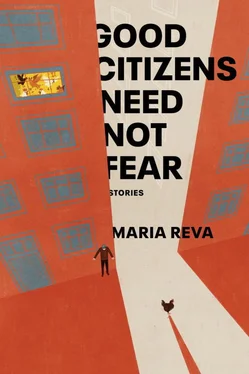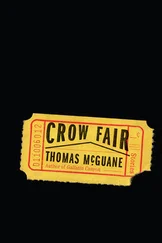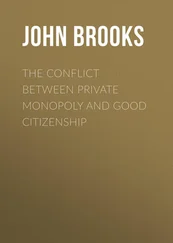Oh, and the Madagascar hissing cockroach is very clean, cleaner than people, but if kept under less-than-ideal conditions it is known to harbor up to fourteen species of mold, some of which are potent allergens. In the event of a mold outbreak, simply place the roach into a plastic bag with a half cup of extra-fine flour, gently shake the bag to dislodge the fungal roots—you may even have to rub the roach a little—transfer the roach to a sieve deep enough to prevent escape, and repeat as many times as needed to remove all the mold. Don’t forget to vacuum the carpets, linen, and furniture to get any straggling spores, run an air purifier/dehumidifier, throw all your clothes into the laundry, and, finally, scrub your hair and skin. Reevaluate why you had the outbreak in the first place, and find ways to improve your cleanliness.
—
What the grandparents reevaluate: the grandson’s wishes. What he truly wanted for them wasn’t a pet cockroach, but a better life, a peaceful retirement. He would have wanted them to give up the bone record business, get that tumor removed. Turn that dreadful music off.
—
The pawnshop owner, a hulking man in a squeaky leather jacket, won’t touch the roach brooch.
“Roach brooches are the rage in the highest fashion circles,” Lila insists. She shows him the photograph of the model wearing a roach, but the pawnshop owner doesn’t seem to know about these fashion circles.
“The gems are among the rarest in the world,” says Pyotr. “Serendibite.”
The pawnshop owner laughs, as if Pyotr has made up a word.
Later that week in the train station underpass, the grandparents try to sell the roach brooch to a French tourist, a rich-looking one. The woman has a mink fur coiled around her neck, the animal’s tiny jaws clasped to its own rear. Lila tells the tourist that this is one of those mutant Chernobyl cockroaches, the ones there are rumors about.
“But why glue rocks onto it?” the French tourist asks.
“Serendibite,” Pyotr shouts.
At last the grandparents find a jeweler two towns over, an ancient man whose skin hangs from his face and arms in doughy sheets. When he opens the box to appraise the contents, the roach gives a loud hiss, like an old bus when its brake is released, and scrambles up the jeweler’s sleeve. The jeweler screams, slaps his arm, then elbow and shoulder, as though to put out a fire. He stops screaming only when he frees himself from his shirt and locks himself in the bathroom. It takes Pyotr and Lila half an hour to coax the roach from under the cabinet using crumbs and lint from their pockets.
“So long as the gems are touching that thing,” the jeweler declares behind the bathroom door, “I’m not touching the gems.”
—
Never attempt to remove the gems from the insect, the manual warns. Madagascar hissing cockroaches have a natural waxy covering, and the patented technology used to attach the gems took months to develop. They won’t come off without harm to your pet.
Of course, the grandparents don’t want to do harm.
Even in the labor camps, the guards would wait until a prisoner died before gouging out a golden tooth—or so Pyotr and Lila read. The rules of civility hold.
Roaches don’t live very long anyway. In the past, whenever the apartment had an infestation of the lowly local ones, their corpses soon turned up everywhere.
—
The best thing about the Madagascar hissing cockroach, the manual proclaims: it can live up to five years !
—
If the grandparents stop putting carrot peels in the roach’s box, or refilling the water, it isn’t on purpose. They can be so forgetful, with their busy days, with the tumor, with the music that drowns out the tinny scratches coming from the box.
“I’LL BE THERE FOR YOU,” the music promises, “WHEN THE FLAMES GET HIGHER.”
The scratches may cease any day now.
—
Which family member will call first? One of the daughters, surely. But which?
Whichever daughter calls first will get a share of the money from the serendibite. Of course, this will be a surprise. Pyotr and Lila wouldn’t want the money to be the main draw. They witnessed the greedy frenzy after the grandson died, and wouldn’t want to repeat it.
—
Maybe nature isn’t a circle of life, but a circle of abandonment.
—
It’s true what they say about roaches surviving anything. Even without food or water, this one is looking as if it will survive both the grandparents.
The grandparents can’t bring themselves to smash the roach with a frying pan. They can’t fathom killing the last remnant of their grandson so violently, or risk damaging the jewels.
They can’t bring themselves to drown it either. Or freeze it. Or suffocate it in a plastic bag.
The only sensible way to deal with it: treat the roach brooch like the insect that it is, and spray it with insecticide.
In a spray bottle, Lila mixes baking soda, chili pepper, soapsuds, and sunflower seed oil (this last one, to block breathing pores).
She turns to her husband. “I cooked, you serve.”
Pyotr, solemn, sits the tin box on the kitchen table. He pops the lid with one hand, holds the spray bottle with the other. His finger on the trigger, he wishes the cockroach would try to run, display instinctual fear and distrust, like every other living thing. But the insect sits on its newspaper bed, wiggling its antennae. How could such a gentle creature possibly survive in the jungle?
In the corridor, the phone rings.
The grandparents look at each other in relief.
It must be one of their children. How silly the grandparents have been, to think themselves abandoned. How awful to imagine their beloved daughter (or granddaughter!) waiting at the other end of the line, worrying.
Pyotr stays with the roach while Lila hurries down the corridor. She cradles the phone against her cheek.
A deep male voice fills the line. A stranger’s. “Have you taken the jewels off the roach yet?”
Lila’s face contorts. She wants to slam the phone down, free the line for the children’s calls.
The man introduces himself as an employee of the pawnshop the grandparents visited two weeks ago. Good thing his boss jotted down their phone number, the man says, if only to make them go away.
Lila finds her voice again. “We’re just about to take the jewels off.”
“Don’t.” Unlike his boss, this man knows about roach brooches, has seen the catalogs. He’s willing to offer a fine price for it. He just needs her to check one tiny thing.
“I’ll do anything,” Lila says.
“On the roach’s belly, between the front and middle sets of legs, should be a tiny RB. Like a logo plaque inside a Prada bag, proving authenticity.”
From the corridor, Lila yells the instructions to her husband in the kitchen.
“I can’t see its underside,” her husband says.
“Lift it up and take a peek,” she shouts.
“With my hands?”
“With your hands.”
Pyotr holds his breath, hooks his fingers around the carapace. The bits that aren’t encrusted with jewels feel slippery, like polished wood. The heft is surprising, and he wonders how much of the weight belongs to the living part of the brooch. The roach’s legs swivel wildly as he turns it upside down. Its abdomen is composed of tawny segments that slide in and out of each other. He spots the small black head, bowed like a penitent’s, the two matte bumps for eyes.
“I don’t see any mark,” says Pyotr, staring at the belly.
“My husband is still looking,” Lila relays to the pawnbroker.
Читать дальше












